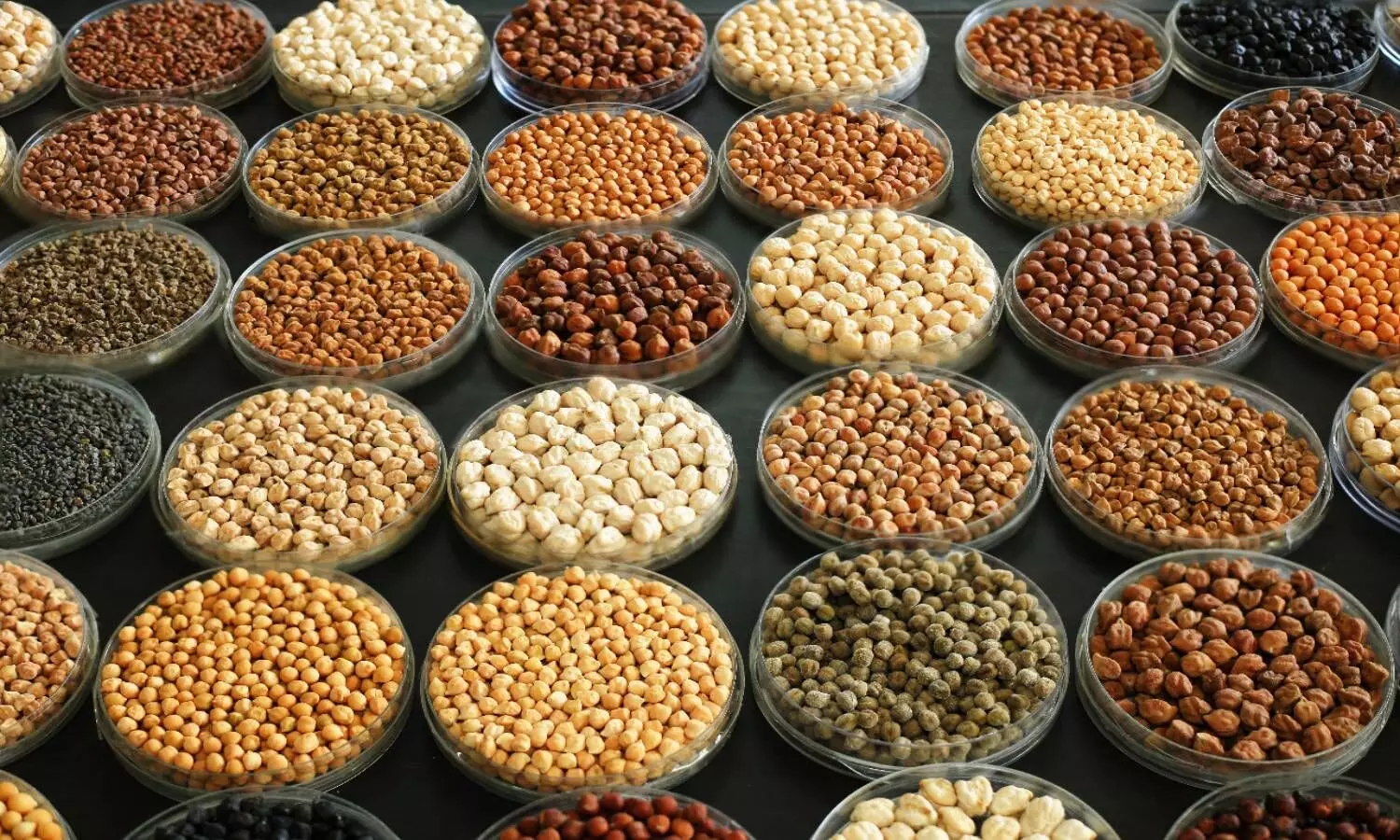ICRISAT conducts the largest genome sequencing for chickpeas
Led by the International Crops Research Institute for the Semi-Arid Tropics (ICRISAT), the team identified 29,870 genes that include 1,582 previously unreported novel genes.
By Newsmeter Network
Hyderabad: An international team of researchers from 41 organizations has assembled chickpea's (chana) pan-genome by sequencing the genomes of 3,366 chickpea lines from 60 countries. Led by the International Crops Research Institute for the Semi-Arid Tropics (ICRISAT), the team identified 29,870 genes that include 1,582 previously unreported novel genes.
"By employing whole genome sequencing, we have been able to affirm the history of chickpea's origin in the Fertile Crescent region and identify two paths of diffusion or migration of chickpea to rest of the world," said Prof. Rajeev Varshney, a Research Program Director at ICRISAT and leader of the study that would go live at 9:30 pm on 10th November in Nature.
He added, "More importantly, this research provides a complete picture of genetic variation within chickpea and a validated roadmap for using the knowledge and genomic resources to improve the crop."
"The demand for chickpea is set to increase in the coming years as the world's population rises. Research like this is the need of the hour to help major producing countries like India boost crop production while making crops climate-resilient," said Dr. Trilochan Mohapatra, Director General, Indian Council of Agricultural Research (ICAR), and an author on the study.
Dr. Jacqueline Hughes, Director General, ICRISAT, said, "By developing many genomic resources for chickpea over the last decade, ICRISAT has helped the crop shed its 'orphan' tag. With our partners in agricultural research for development, we will continue to research chickpea and translate findings into crop varieties that benefit farmers, consumers and nations."
"Genomic resources are crucial for accelerating the rate of genetic gains in crop improvement programs. It is hoped that the knowledge and resources made available through this study will help breeders across the world revolutionize chickpea breeding without eroding its genetic diversity," said Dr. Arvind Kumar, Deputy Director General-Research, ICRISAT.
To take the study's findings to the farm, the authors proposed three breeding approaches based on the genomic prediction that aim at improving 16 traits and enhancing chickpea productivity.
Interestingly, the population size reached its minimum around 1000 years ago before seeing a strong expansion in the last 400 years, which suggests a renewed interest in chickpea agriculture across the world.
In 2013, ICRISAT led the effort to sequence the first chickpea genome (a Kabuli line). This sequence paved the way for developing molecular resources for the crop's improvement.
ICRISAT and other organizations have been using genomics-assisted breeding approaches by targeting just one or at most two genes. Nevertheless, these efforts resulted in seven improved chickpea varieties in India and Ethiopia over the last three years.
In the latest research, the study's authors report sequencing 3,171 cultivated accessions and 195 wild accessions of chickpea that are conserved in multiple gene banks. These 3,366 accessions are representative of chickpea's genetic diversity in a much larger global collection.
Grown in more than 50 countries, chickpea is the world's third-most cultivated legume. It is indispensable to diets in many nations and an important source of dietary protein, especially in the Global South.